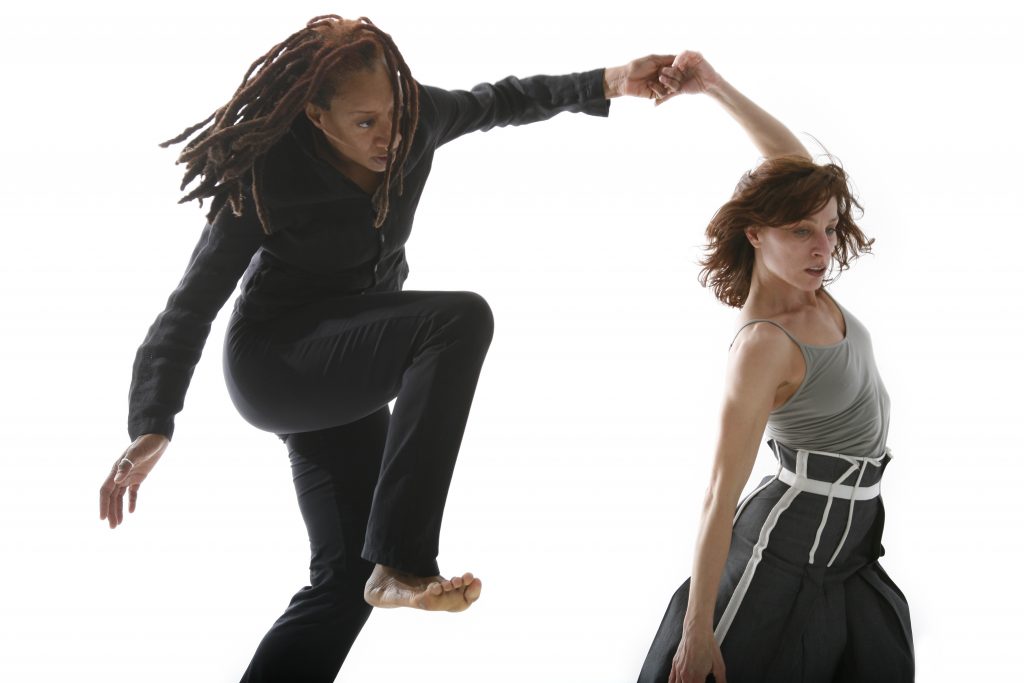I am a process person. I am interested in the details of the journey more than the arrival. I’m happy to be swept away by a performance, but I also keep a running tab of the details that snag in my mind, what makes it just so. There are the arrangements of timings, of gestures flung or shoved or urged into space, of glances toward an inconsequential whatever that transform into deep matter. I compile these arrangements without judgement. I recognize them when they realign in front of me. (Re)cognition. I (re)turn to what seems to fit in the pocket, and wonder aloud: why it is so. This is what I do when I make dances, collaboratively, with the dance artists who are in the room with me.
There are choreographers who can imagine a whole scenario and then make it. I’ve never been really good at that. I’ll look at a phrase, a gathered bit of movement, and often just reframe the room we’re working in: what if the background couple moving at their own pace is the missing piece of that phrase? Or, they’re improvising, and I’ll change my place in the room. So, I basically ask, what is that? What is that? In watching I come up with questions more than directives. And from an un-formed and then an in-formed place of what is that I build dances, events, and situations. And I notice reference: how is that similar to something else? I refer to film, novels, writing styles, other dances. I assign homework: Ian McEwan’s Saturday, for my work Necessary Beauty (2008), because of how he leads me from the mundane to the Big Event without warning. David Foster Wallace, because of how he leads me from the horrific to the mundane.

A while ago I ran across a short story of Wallace’s, Incarnations of Burned Children. He takes us to and through a horrific event that happens in the middle of a regular day. He doesn’t resolve it for us—we don’t know how it continues past the six minutes it takes to read. But it is the weighted imbalance between the mundane and the horrific that brings me up short. How did he do that? How did he make words on a page stand out in time and affect? It seemed to me his skill was in relaying the chunks of event that were splayed out in a rush of feeling, but also so particularly annotated. He took the time to dwell on the commonplace in the midst of madness: syntax and flow.
This parsing of structure and event—syntax and flow—came to be a choreographic imprint for our process of creating in The Making Room, as well as a reference to particular writers. At times it was an explicit direction, a way of thinking and moving that we tried to make evident. By January 2017, six months after our first extended creative residency and reading the Wallace stories together, we were working on a section called Syntax Duets and learning what we might mean by syntax in a duet form. Sometimes I said “syntax” to myself to see if I was on a track that had a direction beyond my intuition. And maybe it was a way of naming my intuition in order to share it with everyone else. Once a work has a life and process that includes more sensibilities than your own, it’s best to share as much of that intuitive suss as you can.
In hindsight, “syntax and flow” was the beginning notion for In A Rhythm, although that sounds much more directed than was the case. It was a way of thinking that appeared and caught my attention. And my attention was in a receptive and open frame of mind in The Making Room.